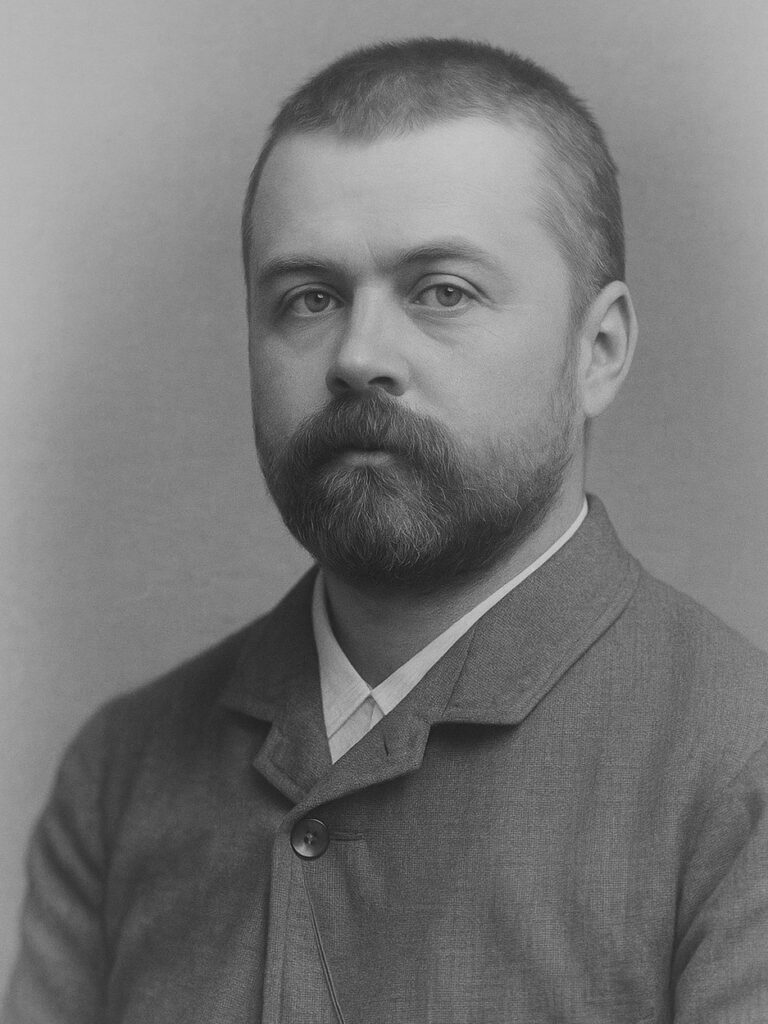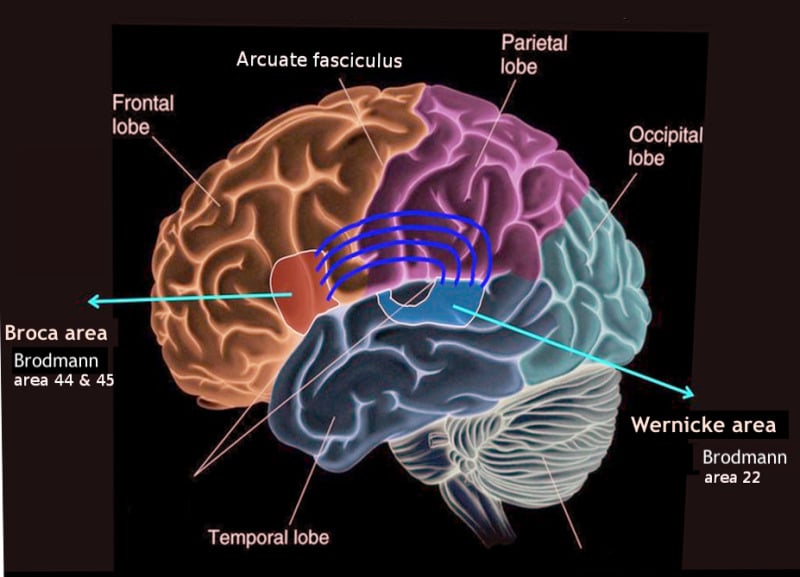Carl Wernicke

Karl Wernicke (1848-1905) was a German neurologist and psychiatrist.
Carl Wernicke was a pioneering German neurologist and psychiatrist best known for identifying the brain region responsible for language comprehension — now known as Wernicke’s area. His work laid the foundation for the neurological study of language, contributing to the clinical understanding of aphasia, neuroanatomy, and encephalopathy. A contemporary of Paul Broca (1824–1880), Wernicke expanded the cortical localisation theory of brain function and emphasised the connectivity of brain regions in language processing.
Born on May 15, 1848, in Tarnowitz, Silesia (then Prussia, now Tarnowskie Góry, Poland), Wernicke studied medicine at the University of Breslau, graduating in 1870. He served as a military physician during the Franco-Prussian War and later worked under neurologist Theodor Meynert (1833–1892) in Vienna. His landmark monograph “Der aphasische Symptomencomplex“ (1874) described a receptive form of aphasia due to lesions in the posterior superior temporal gyrus.
Wernicke held academic posts in Breslau, Halle, and Munich, and contributed significantly to psychiatric classification, encephalopathy research (notably Wernicke encephalopathy), and the concept of associative pathways. He died at age 57 in 1905 following a bicycle accident.
Biography
- 1848 – Born May 15 in Tarnowitz, Silesia (Prussia)
- 1870 – Medical degree, University of Breslau; served in Franco-Prussian War
- 1871–1874 – Worked with Theodor Meynert in Vienna
- 1874 – Published Der aphasische Symptomencomplex, identifying receptive aphasia (Wernicke’s aphasia)
- 1876 – First assistant under Karl Westphal (1833–1890) at the Berlin Charité practising neuropsychiatry
- 1885 – Appointed Professor at University of Breslau
- 1890 – Published Lehrbuch der Gehirnkrankheiten (Textbook of Brain Diseases)
- 1897 – Founded the journal Monatsschrift für Psychiatrie und Neurologie with Theodor Ziehen (1862-1950)
- 1904 – Moved to Chair of Psychiatry at University of Halle
- 1905 – Died June 15 following a bicycle accident in Thüringerwald, aged 57
Medical Eponyms
Wernicke’s area
Wernicke identified the posterior superior temporal gyrus of the dominant hemisphere as essential for language comprehension. Damage to this region results in fluent but nonsensical speech, now termed Wernicke’s aphasia.
Definition: Posterior part of the superior temporal gyrus, left hemisphere
Function: Comprehension of spoken and written language
Damage: Results in fluent aphasia with impaired understanding

Wernicke’s aphasia (1874)
Wernicke’s aphasia is the classical “receptive aphasia”, in distinction to the “expressive aphasia” of Broca, although this terminology is problematic since there are concurrent “expressive” problems in Wernicke’s aphasia (and “receptive” problems in Broca’s aphasia).
Symptoms: Fluent speech, paraphasias, neologisms, poor comprehension
Contrast: Differs from Broca’s aphasia (non-fluent, preserved comprehension)
- Wernicke C. Der aphasische Symptomencomplex: eine psychologische Studie auf anatomischer Basis [The aphasic symptom complex: a psychological study from an anatomical basis] 1874
Wernicke encephalopathy (Wernicke syndrome) (1881)
A neurologic syndrome caused by thiamine deficiency (often associated with chronic alcoholism), presenting with ophthalmoplegia, ataxia, and confusion. He described the syndrome post-mortem in 1881.
Constellation of nystagmus, ophthalmoplegia, cerebellar signs, neuropathy, and inability to record new information (“loss of recent memory”) as a result of thiamine deficiency (secondary to alcoholism and/or starvation).
Anatomical changes include bilateral pinhead-sized haemorrhages in the mamillary bodies and in the periventricular and periaqueductal grey matter. [aka Wernicke disease; Wernicke syndrome; polioencephalitis hemorrhagica superior; Meynert amentia, Gayet disease, Gayet-Wernicke syndrome]
Triad: Ophthalmoplegia, ataxia, mental confusion
Etiology: Thiamine (B1) deficiency
Legacy: Forms part of the Wernicke–Korsakoff syndrome
- Wernicke C. Die acute, hämorrhagische Polioencephalitis superior. In: Lehrbuch der Gehirnkrankheiten. 1881; II(47): 229-242
Wernicke hemianopic pupil (1883)
Absence of the pupillary light reflex when light is shone into the blind half of the retina in homonymous hemianopia.
Localizing Value: Indicates a lesion in the optic tract anterior to where pupillary fibers branch off to the pretectal area.
Clinical Insight: If the lesion is posterior to this point, the reflex is preserved despite visual loss.
- Wernicke C. Über hemiopische Pupillenreaktion. Fortschritte der Medizin, 1883; 1: 49–53
Wernicke’s cramp (1904)
A rare form of painful local muscle cramp precipitated by precipitated by anxiety or fear. Described by Wernicke in a lecture-demonstration in 1904
- Wernicke C. Ein Fall von Crampus-Neurose. Berliner klinische Wochenschrift, 1904; 41: 1121-1124.
Connectionist Theory
Wernicke proposed that complex cognitive functions arise from the dynamic interaction of localized brain regions via white matter tracts — pioneering the connectionist model.
Major Publications
- Wernicke C. Lehrbuch der Gehirnkrankheiten. 1881. [Band II, Band III]
- Duchenne GB, Wernicke C. Physiologie der Bewegungen nach electrischen Versuchen und klinischen Beobachtungen. 1885
- Wernicke K. Ueber hemiopische Pupillenreaction. Fortschr Med 1883;1:49–53
- Wernicke C. Gesammelte Aufsätze und kritische Referate zur Pathologie des Nervensystems. 1893
- Wernicke C. Outline of psychiatry in clinical lectures [24 lecture reprints]. The alienist and neurologist. 1899; XX (2-4). 1900; XXI(1-2). 1902; XXIII(2-4). 1903; XXIV(1-2).
- Wernicke C. Grundriss der Psychiatrie in klinischen Vorlesungen. 1900
References
Biography
- Siemerling E. Carl Wernicke. Archiv für Psychiatrie und Nervenkrankheiten, 1905; 40(3): 1016-1019.
- Pillmann F. Carl Wernicke (1848-1905). J Neurol. 2003 Nov;250(11):1390-1
- Braun B. Carl Wernicke (1848–1905) und die „Wernicke-Kleist-Leonhard Schule“. Beziehungen zur „Erlanger Schule“ der Psychiatrie [Carl Wernicke (1848-1905) and the “Wernicke-Kleist-Leonhard school”. Connections to “Erlangen School” of psychiatry]. Fortschr Neurol Psychiatr. 2020 Oct;88(10):652-660.
- Fresquet JL. Karl Wernicke (1848-1904). Historia de la Medicina
- Carl Wernicke (1848-1905). BNF
- Name: Carl vs Karl. Google ngram
Eponymous terms
- Binder JR. The Wernicke area: Modern evidence and a reinterpretation. Neurology. 2015 Dec 15;85(24):2170-5.
- Javed K, Reddy V, Das JM, Wroten M. Neuroanatomy, Wernicke Area. 2023 Jul 24. In: StatPearls [Internet].
Eponym
the person behind the name
BA MA (Oxon) MBChB (Edin) FACEM FFSEM. Emergency physician, Sir Charles Gairdner Hospital. Passion for rugby; medical history; medical education; and asynchronous learning #FOAMed evangelist. Co-founder and CTO of Life in the Fast lane | On Call: Principles and Protocol 4e| Eponyms | Books |
